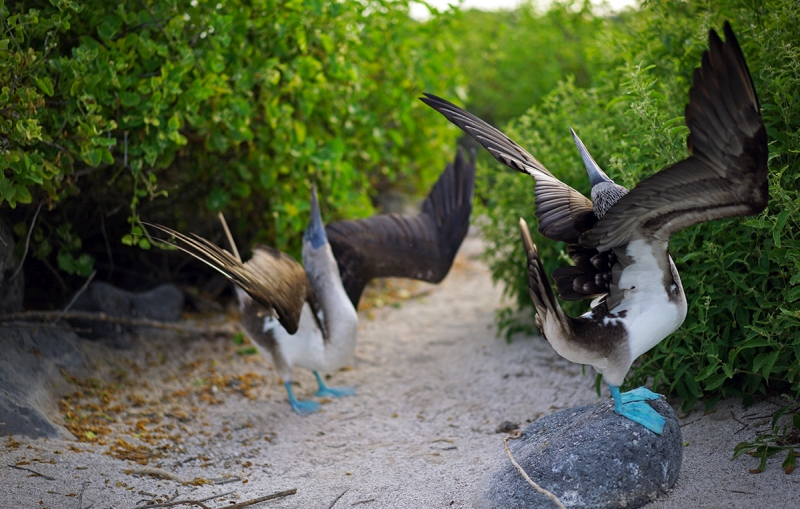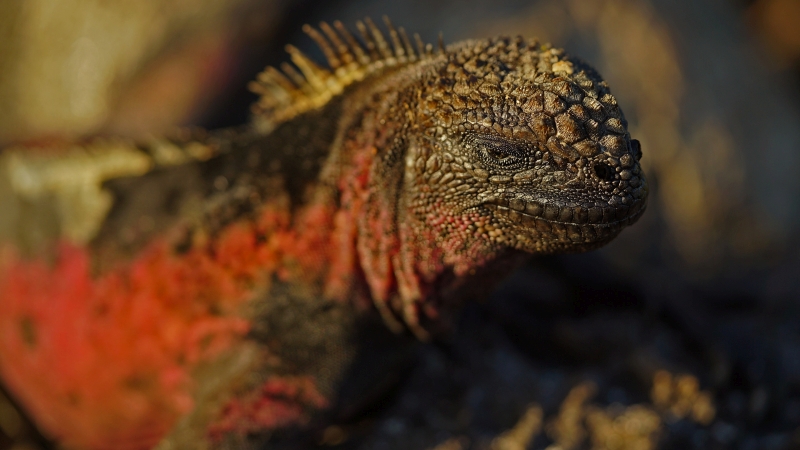In Galapagos there is courtship in the air. The 2018 Tropical Conservation Semester is in the midst of a three week tour of these world-famous islands, and everywhere we go we see Blue-footed Boobies displaying to potential mates, Great Frigatebirds sitting on eggs, Marine Iguanas digging nests, and sea lion pups nursing. As Spring turns to Summer, cooler waters are on their way, bringing a surge of nutrients that are jumpstarting the ocean’s productivity. Nutrients mean more algae, which feed millions of tiny fish, which in turn feed schools of larger fish and squid. All the Galapagos animals that rely on the sea for food are gearing up to capitalize on the feast, and having babies who clamor to be fed.

Blue-footed Boobies, and many other seabirds, are faithful partners that pair up for an entire season. One will sit on the nest for long hours while the other goes out fishing, and they must be confident that their mate will return. So these birds engage in complex and lengthy courtships that cement their partnership for the year. We’ve heard the gurgling cries and seen the inflated red pouches of frigatebirds, marveled at boobies dancing and showing off their feet, and were fortunate enough to catch two Swallow-tail Gulls (the world’s only nocturnal gull) in the act of mating. Love is in the air!
On the ancient island of Española, we paused to observe a group of enormous marine iguanas resting after a long morning of grazing underwater on green algae. These reptiles can swim briskly using their muscular tails, hold their breath for nearly an hour, and dive to depths of 20 feet or more! Back on land, they warm up in the sun to offset the chill of the ocean. For the iguanas, too, mating is in full swing: females are busy excavating nest burrows, and fighting over the best locations, while both males and females are showing off their “christmas” courtship colors of bright red and green.

The semester program comes to the Galapagos every year, as the capstone of our marine biology course. If you are interested in seeing these amazing islands, come see for yourself! Every year we offer a few spots on our cruise to visitors who accompany the course as we spend eight days touring the incredible wildlife and breathtaking sites the Galapagos has to offer. Come join us!